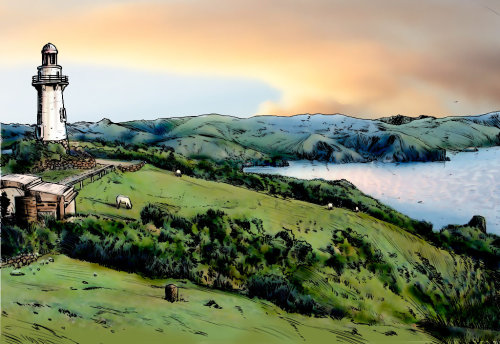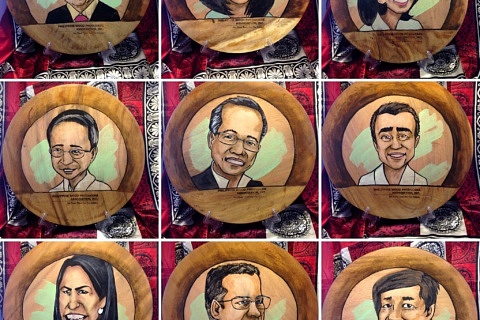I was able to dig up some animation backgrounds that I coloured back in 2009 for a projected under the Commission on Information and Communications Technology (CICT) under the Office of the President. These beautiful places were drawn and inked by Jerald Dorado. I coloured them digitally using Photoshop.
The animation will help teach children and teeners, learn english. At least it will be a fun way to learn english.
The backgrounds are famous places in the Philippines. I hope you enjoy looking at them as much as i loved doing them.
These batanes stone houses were actually built by tribal people in Batanes. The top most island in the Philippines. They need such houses because of the strength of the winds that batter the island.
Mount Apo is a large stratovolcano on the island of Mindanao in the Philippines. It is the highest mountain in the country and overlooks Davao City, a few kilometres to the northeast. Its name means “master” or “grandfather”. Apo is flat topped, with three peaks, and is capped by a 500 m wide volcanic crater containing a small crater lake. It is a source of geothermal energy, but the date of its most recent eruption is unknown, and none are verified in historic times. [wikipedia]
Boracay is a tropical island and it is one of the Philippines’s most popular tourist destinations.
Another famous area in Batanes…the lighthouse…
Patapat Viaduct in Ilocos Norte is an elevated concrete highway constructed along winding/rocky headlands near the northernmost roadway section (could be considered second northernmost roadway section in Luzon). This viaduct was constructed to solve the problem of landslides in the area which have caused so many vehicular accidents in the past. This road is just several meters from the mountain side it gives motorists a spectacular view of Pasaleng Bay.
This is below is my favorite and so far, the longest one to finish. Took 6 hours to color this one. This is Calle Crisologo found in Vigan. This city is always cited as “the best-preserved example of a planned Spanish colonial town in Asia.” Calle Crisologo, is a half-kilometer stretch of cobblestoned street lined with fine examples of 18th century Filipino-Spanish architecture. Among the buildings along the street are hotels, pension houses, souvenir shops, and restaurants. Many of the houses have those typical wooden benches in front where anyone can sit. And in the evening, dining establishments set up tables on the street so people can eat their dinner al fresco. Kalesas, or horse-drawn carriages, are the only vehicles allowed on the street. I haven’t been here yet, but I do plan to visit it next year.














